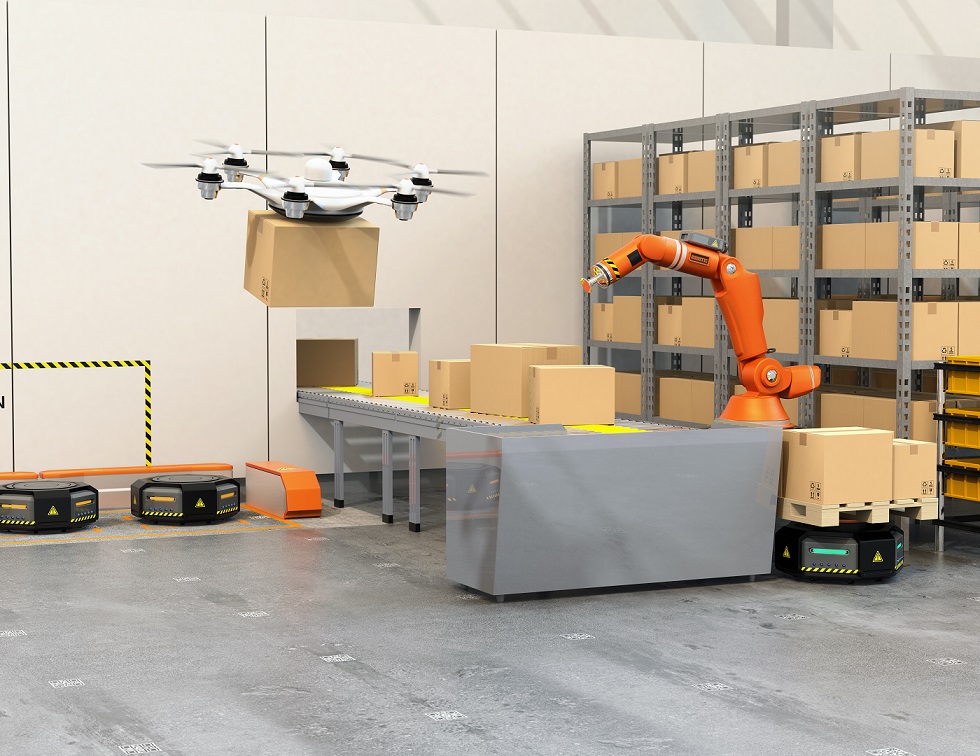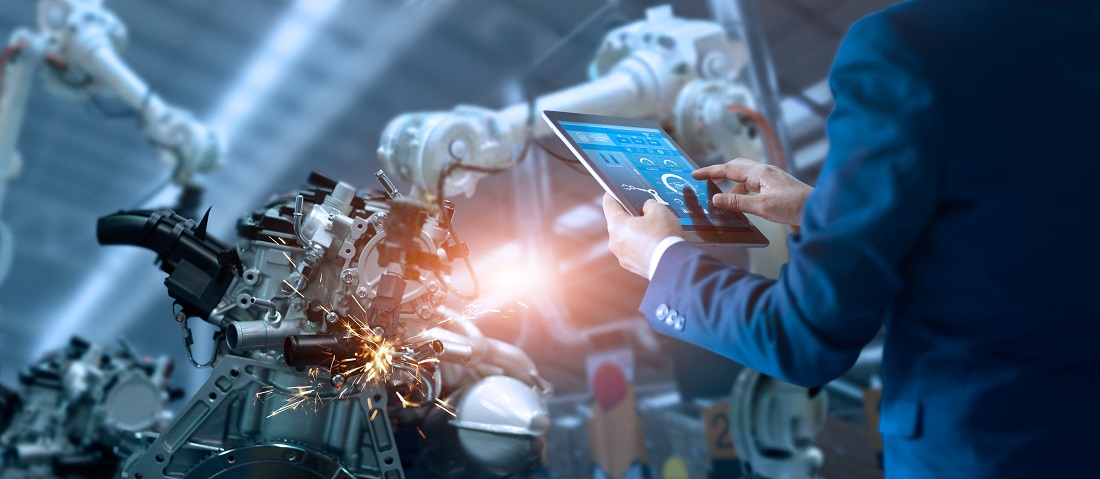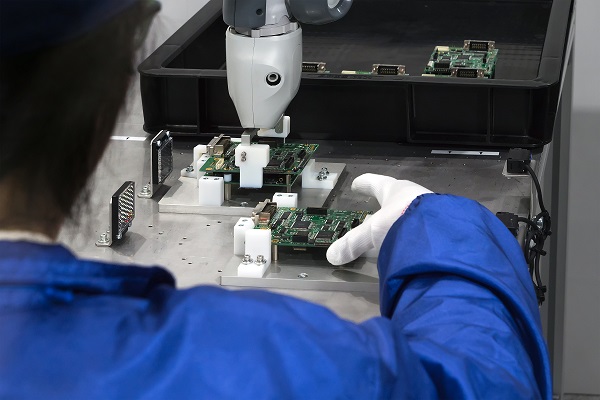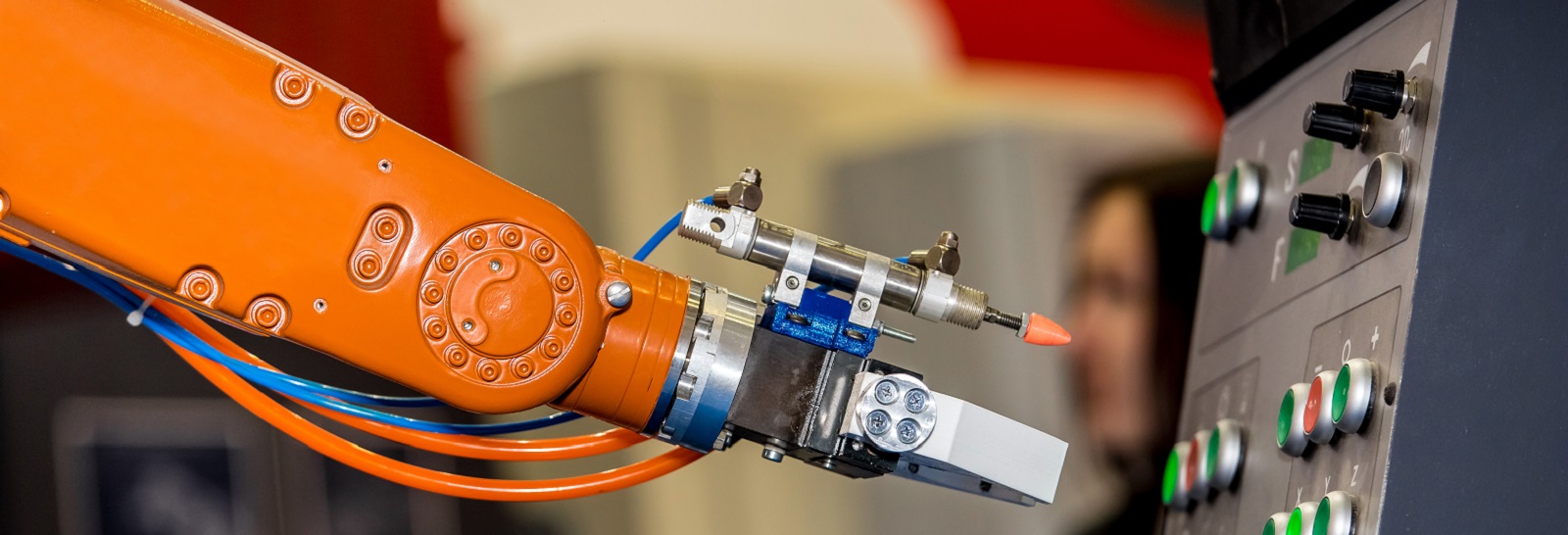Are Cobots - or Collaborative Robots - the Future of Work?
Text
While visions of the android takeover still loom large in science fiction, in science fact collaborative robots, or cobots, are increasingly working peacefully side-by-side with their human colleagues. And with robotics and machinery accounting for 43 per cent of Industry 4.0 M&A transactions in the DACH region in 2018, it’s clear that this technology is shaping up to be the next frontier in manufacturing. In this, the third in our series on Industry 4.0 in the DACH region, we look at how cobots are taking their place in big business and SMBs alike.
“The sheer range of technologies that power industrial processes, as well as the drive to displace slower-moving legacy players, has led to a sharp increase in start-ups with truly innovative Industry 4.0 solutions,” Hampleton Partners' Industry 4.0 in the DACH Region M&A market report 1H 2019.
Best of both worlds
So-called because they work alongside, rather than instead of, their human counterparts, cobots can be programmed to perform any number of tasks. This collaborative approach means companies have been able to design workflows that combine the best attributes of their human and robotic employees in ways that result in harmonic hybrid workforces. In Cologne, Germany, cobots help factory workers to fit parts on to Ford Fiestas, for example. The 3ft robot uses its strength to lift and position shock absorbers into the wheel arch, before the person uses their intelligence and oversight to complete the installation. At Amazon fulfilment centres across Europe and beyond, cobots autonomously shuttle around, ferrying goods from warehouses to the packing staff, who prepare them for shipment.

Text
In America, a survey by the Society of Manufacturing Engineers found that 89 per cent of the businesses they served found it difficult to recruit to jobs with “many repetitive and ergonomically unfavourable tasks”. Robotics could be the solution as these jobs, which Universal Robots refer to as “the dirty, the dull and the dangerous”, or the 3Ds, are increasingly being taken up by cobots.
Economic benefits
While companies deny that robots will replace workers, there’s no denying that automation saves money on employment costs. The average price of a highly-adaptable cobot is just $24,000 which compares favourably with the salary of an average factory worker. Ongoing costs are lower too, with maintenance coming in at a much lower rate than employee benefits such as healthcare, and cobot training happening at the touch of a programming button. This will become more relevant as more and more baby boomers reach retirement age, leaving manufacturers facing an acute skills gap.
Making a difference in DACH
As our latest market report highlights, M&A is playing a major role in the shaping of Industry 4.0 in general, and robotics in particular. Smart M&A and investment strategies work both ways. They allow emerging players to attract funding and form partnerships with global industry leaders who, in turn, can acquire the technologies they need to stay ahead of the competition. In the DACH region, we have seen these strategies confirm confidence in, and add momentum to, the robotic future.
Brockhaus Private Equity acquired a majority stake in industrial data management software company, Auvesy, in September 2017. The company, which works in the automotive, energy generation, food production and industrial equipment spaces, provides an IoT platform for automation that is designed to work with all data systems.
More recently, in January this year, German robotics specialist Synapticon received high investment in a Series B funding round. The company develops and produces specialised high-performance robotics components for industries as diverse as aerospace and defence, pharma, and retail and fashion, demonstrating the potential reach of the robotic revolution.
Text
A robotic future?
Cobots are a breed apart from the industrial robots of years past. They are easy to set to work, often programmed through a tablet or even by simply adjusting an arm, and they can be installed in a matter of hours. They are flexible and mobile, don’t need much space and can be redeployed to support new and multiple applications with ease. What’s more, they are safe. They don’t need safety cages and they are programmed to stop or adjust their speed if workplace safety is compromised.
The potential of this technology to reduce costs in manufacturing is obvious. Companies such as Ford and Amazon have shown the way, and advances in technology are now allowing smaller businesses to follow in their footsteps. The future is most certainly robotic, but as to whether we are to expect a cobot takeover, the industry has been quick to put any anxious minds at rest. For the time being at least, robots are sticking to the 3Ds.
“Deals like the $5billion merger between German robotics giant KUKA and Chinese home appliance manufacturer Midea underline the drive for DACH-based Industry 4.0 assets,” Hampleton Partners' Industry 4.0 in the DACH Region M&A market report 1H 2019.




